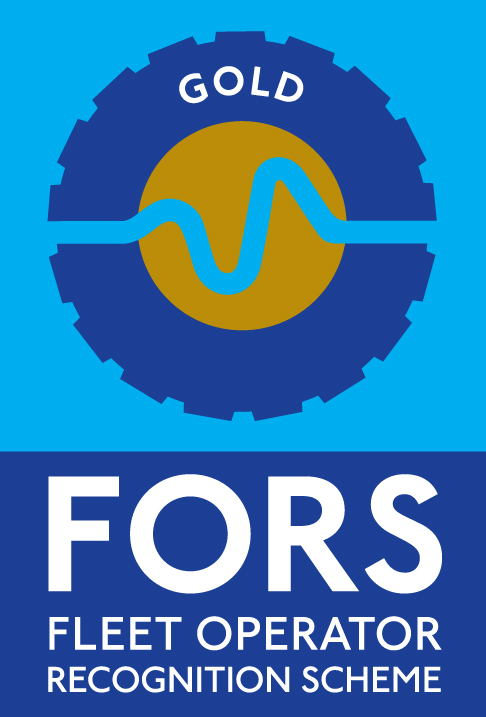Title Page
-
Conducted on
-
Auditor:
-
Location
Untitled page
Untitled page
Managing and supervision workplace transport safely
-
Check, in consultation with your employees, that your level of management control/supervision is adequate
-
Are your supervisors, drivers and others, including contractors and visiting drivers, aware of the site rules and their responsibilities to help maintain a safe workplace and environment?
-
Has a risk assessment been carried out for all workplace transport hazards?
-
Is the level of supervision sufficient to ensure that safe standards are maintained?
-
Are penalties applied when employees, contractors etc fail to maintain these<br>standards?
-
Do you take adequate steps to detect and correct any unsafe behaviour of<br>drivers of both on-site and visiting vehicles, as well as pedestrians?
-
Do you make sure the underlying reasons for unsafe behaviour are investigated?
-
Is there good co-operation and liaison on health and safety matters between<br>your employees and those who collect or deliver goods?
-
Check what your drivers and other employees actually do when doing their
work -
Do drivers drive with care, eg use the correct routes, drive within the speed<br>limit and follow any other site rules?
-
Do you make sure your drivers and other employees have enough time to<br>complete their work without rushing or working excessive hours?
-
Are your employees using safe work practices, eg when (un)coupling,<br>(un)loading, securing loads, or carrying out maintenance?
-
Do managers and supervisors set a good example, eg by obeying vehicle/<br>pedestrian segregation instructions, and by wearing high-visibility clothing<br>where needed?
-
Do drivers and other employees wear any personal protective equipment<br>provided and use any safety equipment provided?
Site layout and internal traffic routes
-
Check that the layout of routes is appropriate
-
Are vehicles and pedestrians kept safely apart?
-
Where necessary, are there suitable pedestrian crossing places on vehicle<br>routes?
-
Is there a safe pedestrian route that allows visiting drivers to report for<br>instructions when entering the site?
-
Is there a properly designed and signed one-way system used on vehicle<br>routes within the workplace?
-
Are there adequate numbers of suitable and safe parking places for all vehicles<br>and are they used?
-
Is the level of lighting in each area sufficient for the pedestrian and vehicle<br>activity?
-
Check that vehicle traffic routes are suitable for the type and quantity of
vehicles which use them -
Are they wide enough?
-
Do they have firm and even surfaces?
-
Are they free from obstructions and other hazards?
-
Are they well maintained?
-
Do they avoid sharp or blind bends?
-
Check that suitable safety features are provided where appropriate
-
Are roadways marked where necessary, eg to indicate the right of way at road<br>junctions?
-
Are road signs, as used in the Highway Code, installed where necessary?
-
Are features such as fixed mirrors (to provide greater vision at blind bends),<br>road humps (to reduce vehicle speeds), or barriers (to keep vehicles and<br>pedestrians apart) provided where necessary?
Vehicle movements
-
Check that the need for reversing is kept to a minimum and, where
reversing is necessary, that it is carried out safely and in safe areas -
Have drive-through, one-way systems been used wherever possible to reduce<br>the need for reversing?
-
Where reversing areas are needed, are they suitably marked or signposted to<br>be clear to both drivers and pedestrians?
-
Are non-essential people excluded from areas where vehicles reverse?
-
If there is no alternative and you have to use a banksman to direct reversing<br>vehicles, are they adequately trained and visible?
Coupling/uncoupling
-
Check that coupling and uncoupling of vehicles are carried out safely
-
Are the tractor and trailer parking brakes always applied before the hoses are<br>disconnected?
-
Do drivers check the ground will support the trailer and landing legs before<br>uncoupling?
-
Are landing legs always fully extended, properly padded and locked in place as<br>necessary?
-
Is the platform area behind the tractor unit kept clear, as clean as possible and<br>well lit to help prevent falls?
Loading/unloading activities
-
Check that there are safe systems for loading and unloading operations
-
Are loading/unloading operations carried out in an area away from passing<br>traffic, pedestrians and others not involved in the loading/unloading operation?
-
Are the load(s), the delivery vehicle(s) and the handling vehicle(s) compatible<br>with each other?
-
Are loading/unloading activities carried out on ground that is flat, firm and free<br>from potholes?
-
Are the vehicles braked and/or stabilised, as appropriate, to prevent unsafe<br>movements during loading/unloading operations?
-
Are systems in place to prevent vehicles driving away while they are still being<br>(un)loaded?
-
Are drivers and others kept in a safe place away from the vehicle during<br>(un)loading?
-
If drivers need to observe loading, is there a clearly marked, safe area for them<br>to do this?
-
Has the need for people to go onto the load area of the vehicle been eliminated<br>where possible and, if not, is safe access provided and used?
-
Is appropriate lifting equipment available for (un)loading vehicles?
-
Is loading/unloading carried out so that, as far as possible, the load is spread<br>evenly to avoid the vehicle or trailer becoming unstable?
-
Are checks made to ensure loads are adequately secured and arranged so that<br>they cannot move about?
-
Are checks made to make sure vehicles are not loaded beyond their capacity<br>before they leave the site?
Tipping
-
Check that tipping operations are carried out safely
-
-
-
-
Do visiting drivers report to site staff for any relevant instructions before<br>tipping?
-
Are non-essential staff excluded from tipping areas?
-
Does tipping take place on ground that is level and stable, where there are no<br>overhead hazards such as power lines, pipework etc?
-
Where sites are not level and stable, are the tipping faces safe for vehicles<br>involved in tipping operations, eg compacted with no side slopes?
-
Are suitably sized wheel stops provided for reversing tipping vehicles?
-
Are tailgates secured open before tipping or removed completely when<br>necessary?
-
Do drivers check their loads are evenly distributed across the vehicle before<br>tipping?
-
Do drivers know what to do if loads stick while tipping?
-
Do drivers always make sure the body is completely empty, and drive no more<br>than a few metres forward to ensure the load is clear?
-
Is there a system of maintenance in place for the tipper and the tipping<br>mechanism?
Work at height on vehicles
-
Check that suitable and effective measures are in place to prevent falls
from vehicles -
Do you avoid work at height where it is reasonably practicable to do so, eg by<br>doing work from the ground?
-
Where work at height cannot be avoided, do you prevent falls using an existing<br>safe place of work or the right type of equipment, eg a suitable platform or a<br>gantry with guard rails?
-
Where the risk of a fall cannot be eliminated, do you minimise the distance and<br>consequences of a fall, eg using a personal fall-protection system?
-
Are surfaces slip-resistant where people need to walk on vehicles?
Sheeting/unsheeting
-
Check that sheeting and unsheeting operations are carried out safely
-
Can the sheeting operation be carried out from the ground?
-
Are sheeting/unsheeting operations carried out in safe parts of the workplace,<br>away from passing traffic and pedestrians and sheltered from strong winds and<br>bad weather?
-
Are the vehicles parked on level ground with their parking brakes on and the<br>ignition key removed?
-
Do you use automatic or mechanical sheeting systems to avoid the need for<br>manual sheeting?
-
Where manual sheeting is unavoidable, is there a system in place which avoids<br>the need for a person to climb on the vehicle or load, eg by sheeting from the<br>ground or providing a platform from which loads can be sheeted?
Vehicle selection and suitability
-
Check that vehicles are safe and suitable for the work for which they are
being used -
Have suitable vehicles and attachments been selected for the tasks which are<br>actually carried out?
-
Is there a safe means of access to and from the cabs and other parts that need<br>to be reached?
-
Is a suitable working platform and edge protection provided where necessary?
-
Do they have suitable external mirrors and additional aids (eg CCTV) where<br>necessary to provide the greatest visibility when manoeuvring?
-
Do they have horns, lights, reflectors, reversing lights and other safety features<br>as necessary?
-
Do they have effective service and parking brakes?
-
Do they have seats and seat restraints where necessary that are safe and<br>comfortable for users?
-
Are there guards to prevent access to dangerous parts of the vehicles, eg<br>power take-offs, chain drives, exposed exhaust pipes?
-
Are drivers protected against bad weather conditions, or an unpleasant working<br>environment, eg the cold, dirt, dust, fumes and excessive noise and vibration?
-
Is suitable driver protection against injury provided where necessary if there is<br>an overturn?
-
Is suitable driver protection provided where necessary to prevent them being hit<br>by falling objects?
-
Are operators involved with or consulted on vehicle selection?
Vehicle maintenance
-
Check that vehicles are maintained properly
-
Is there a regular preventative maintenance programme for every vehicle, carried<br>out at set times or mileage (eg in accordance with manufacturer’s instructions)?
-
Is there a system for reporting faults on the vehicle and associated equipment<br>and carrying out remedial work?
-
Where vehicle attachments lift people or objects, are thorough examinations<br>carried out by a competent person?
-
Do drivers carry out basic safety checks before using the vehicle?
Driver competence
-
Check that your selection and training procedures ensure your drivers and
other employees are capable of performing their work activities safely and
responsibly -
Do drivers have the necessary licences or certificates for the vehicles they are<br>authorised to drive?
-
Do you check the previous experience of your drivers, making sure references<br>to training schemes and other qualifications are supported by certificates?
-
Do you assess them to ensure they are competent?
-
Do you provide site-specific training on how to perform the job, and information<br>about particular hazards, speed limits, the appropriate parking and loading<br>areas etc?
-
Do you have a planned programme of reassessment and refresher training for<br>drivers and others to ensure their continued competence?











